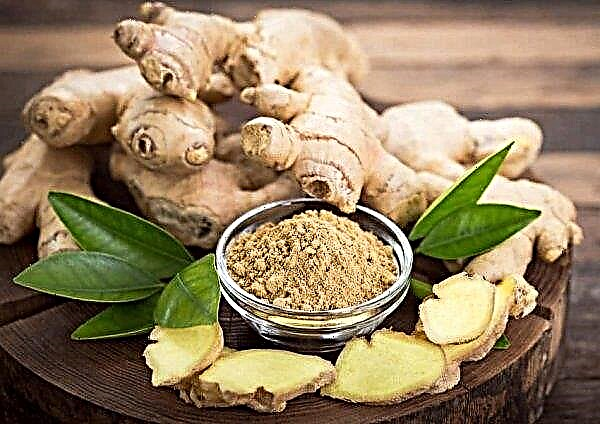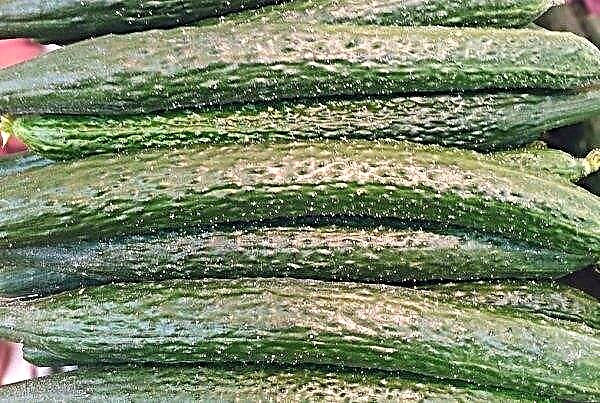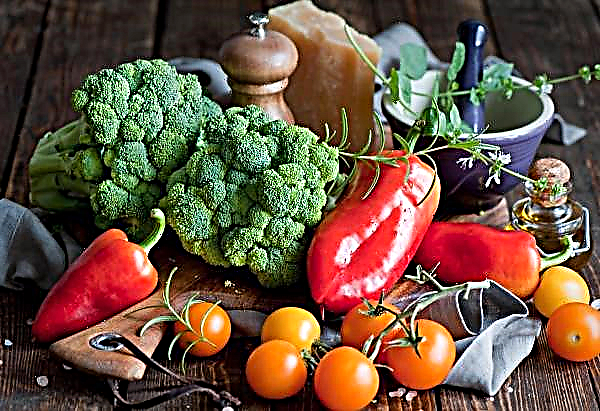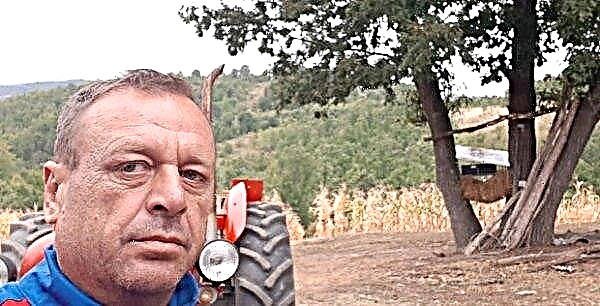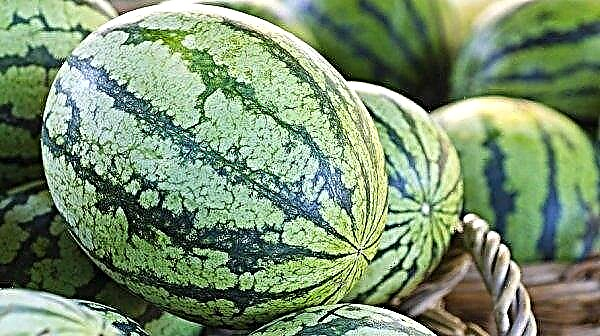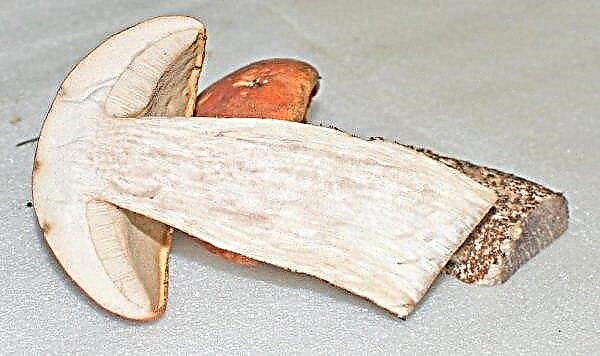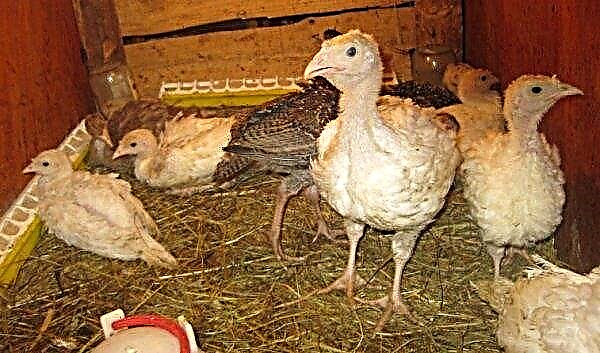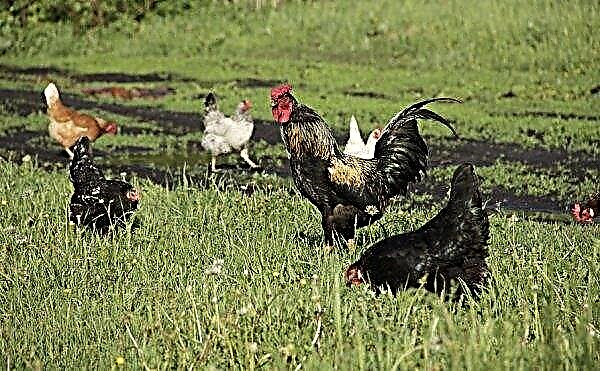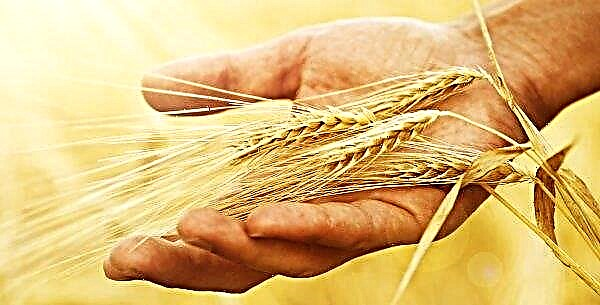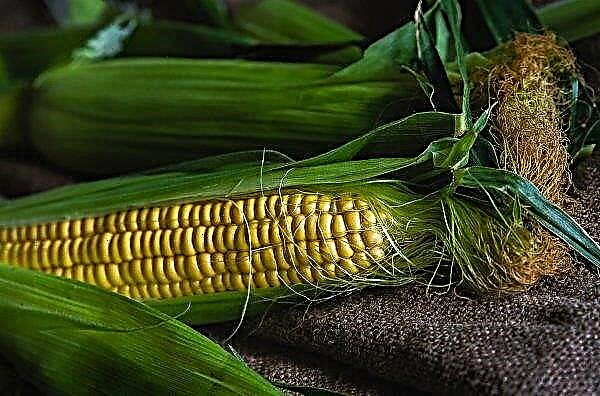Growing sheep at home is one of the most promising and profitable areas of the livestock business. Animals have endurance, unpretentious in care and nutrition. The sheep breeding process also includes insemination of animals, period of gestation, lambing and caring for newborns. When sheep have a reproductive age, as well as what methods of their insemination exist, see the article in more detail.
Reproductive age of sheep
When raising sheep, many farmers are faced with the need to increase the number of livestock. However, in order to get a healthy and strong offspring, you need to know some of the subtleties of animal mating, insemination methods and the characteristics of the period of maturation.
Reaching the reproductive age of sheep and sheep
The female has a reproductive age at the age of seven months. However, experts do not advise it to happen to a ram at this time, since the fragile body of the animal is not yet able to bear the fetus normally. The most suitable age for the first pregnancy is considered one year, provided that the female reaches a weight of 40-45 kg.
As for the ram, its puberty occurs in 5-7 months. But for the reproductive function, the male begins to be used from the age of 16-18 months, after they bring him to good fatness.
Age at which happen
As already noted, the first mating of females is recommended not earlier than before it reaches the age of one year. The male is ready for mating at the age of 1.5 years. Before allowing animals to mate, they should be brought to a certain fatness.
A sheep is prepared for the mating process in approximately 1–1.5 months. To do this, first of all, lambs are excommunicated from the queens, and dairy sheep are no longer milked. It is recommended to let rams into a mating when his body is fully formed and strengthened. Upon reaching maturity, such males have genital organs fully developed, and the quality of sperm is much higher.
Selection of sheep and sheep for breeding: basic principles
To get a healthy and strong offspring, for breeding, you should choose sexually mature, fully developed, strong individuals.
Important! Well-fed animals do not mean obese. Too fat sheep, as well as exhausted ones, mate poorly, remain unfertilized or produce a weak offspring.
Ram selection
For the mating process, you need to select a strong, strong, sexually mature ram, which is distinguished by good fatness. The fertilizing qualities of the animal will largely depend on the quality of care for it and the conditions of detention. Males before the mating process should provide a complete, balanced diet, be sure to include in its diet vitamin-mineral complexes based on vitamins A, E, phosphorus and potassium.
During the mating period of rams, females are allowed only in the daytime, while at night they are taken to a separate room so that they can gain strength and relax. You can do the opposite - to mate animals at night, and in the afternoon give them rest.
One strong ram is enough to fertilize 10-15 lambs. With proper care and a balanced diet, the male is able to cover up to 20 females. However, experts recommend having two sheep on the farm, in case one fails to cope with the task, for example, due to an illness.Did you know? Sheep are used not only in the livestock sector, but also in science. The most famous sheep is a female named Dolly, which became the first mammalian clone in the world. Scientific experiments on cloning were conducted in 1996.
Sheep selection
In most sheep, sexual hunting is seasonal in nature, starting from the end of summer and lasts until mid-winter. However, the main aspect affecting the maturation of sexual arousal is the climatic conditions of the region in which the animals are raised. An exception is the sheep of the Romanovskaya breed, which are ready for mating throughout all twelve months.
Often mating is carried out between August and October. To intensify the onset of hunting, experts advise the sheep to be placed for a couple of hours in a dark room for 2–3 weeks. You can recognize a female who is ready for mating by her behavior and some physiological characteristics.
Important! If the female did not inseminate during mating, then after 16–20 days she again comes to the hunt.
Sheep hunting is accompanied by such signs:
- estrus is a characteristic mucus that is secreted from the genitals of an animal. At the first stages of sexual arousal, the discharge is transparent in color, then it becomes more cloudy and thick, gradually turning into a consistency of thick gruel. It is by the structure of the mucus that farmers can determine the stage of estrus and the period of ovulation;
- redness and swelling of the genitals;
- restless behavior of the female, in which the sheep begins to jump on other females;
- lack of aggression in relation to a ram.

As a rule, hunting in a sheep lasts 2-3 days. At this time, it is recommended that a male be mated to it for mating.
Sheep Insemination Methods
When breeding animals, natural and artificial insemination is used.
Important! Today, harem and hand-made mating is not used in production conditions for animal breeding.
Natural
The natural method of insemination of sheep is divided into several types:
- Cool mating. With this technology, insemination sheep are launched into the flock of sheep for 30–40 days, at the rate of 2-3 males per 100 females. At the same time, during the day the animals are together, and at night the sheep are placed in a separate shepherd.
- Free mating. It is considered the most backward method of insemination today. Its essence lies in the fact that the males are kept together with the sheep, which is why their lambing lasts quite a long time. With this organization of mating, many of the females remain spring.
- Harem mating. Advantageously, a similar method is applied only to breeding herds. In the group of females, numbering 30–40 animals, they launch a selected breeding male, which is separated from the harem at night and fed with special, highly nutritious forages.
- Manual pairing. It consists in the fact that sheep happen to specially selected uterus, which are in a state of hunting. At the same time, the males are kept isolated from sheep and allow him to make 2-3 cages per day.

Artificial
The artificial technology of insemination of a sheep is based on the introduction of ram sperm into its genitals, into the uterine cavity. Such a technique makes it possible to use much less sperm material than with natural mating.
The introduction of sperm during fertilization should be accompanied by absolute sterility, strict adherence to the rules of the procedure and dosage of sperm. For insemination of the uterus, both pure material and diluted are used.Did you know? To date, there are about 600 breeds of sheep. At the same time, long-livers among them are snow sheep, which are able to live up to 24 years.
There are several methods of artificial insemination:
- Cervical. It is carried out using special syringes-catheters that are inserted into the uterine cavity of the female. As a material, undiluted semen is used in a volume of 0.05 ml and diluted - 0.1–0.15 ml.
- Cyclic. This method makes it possible in a short time to carry out the fertilization of a large number of females. It is carried out in certain cycles: daily, 200-300 queens are selected from the flocks and fertilization is carried out, then they are placed in a separate room. In the following days, another batch of sheep is sampled. The procedure is carried out until all the ewes on the hunt are fertilized. As a rule, the cyclic method of artificial insemination is used on large, mechanized farms.
Video: Sheep artificial insemination
Lamb time calculation and hunting acceleration / deceleration methods
A female mating hunt occurs when germ cells mature in her ovary. As a rule, the duration of the hunt will depend on the age of the animal, breed, general health, seasonality and ranges from 12 hours to 3 days. At the same time, ovulation begins 30–32 hours after estrus .. If at home it is difficult to determine the start and end time of sexual arousal, then experts advise insemination twice: immediately after detection of estrus and a day after the first attempt.
You can calculate the lambing time of sheep if you know the gestational age. Animal coagulation lasts about five months, from about 143 to 153 days. In most cases, the mating of animals is carried out in the fall, so that the moment of lambing coincides with favorable natural and feed conditions.
Sheep belong to the category of polycyclic animals, in which the sexual season is extremely pronounced from August to October. The duration of the cycle varies from 14 to 19 days, the stage of excitation - 3-6 days. As noted above to activate the onset of sexual arousal in a sheep, it is necessary to close the animal in a shaded room for several weeks in the daytime. This method is called light and it can accelerate the onset of hunting for 1-1.5 months.
Farmers also practice another, more efficient and faster, way to stimulate hunting - hormonal, which is based on the use of special hormonal drugs, for example, Ovogen, Ovarotropinay. For greater effectiveness, hormones are used together with vitamins and colostrum of a cow. Hormone-based drugs also have high efficacy to inhibit the onset of sexual arousal.Number of offspring per year per sheep
Sheep are early maturing animals and already at the age of one year they are ready for insemination. Pregnancy lasts about 5 months and, in most cases, ends with the birth of one or two lambs. But there may be exceptions.
What does it depend on
The number of lambs a female can bring will depend on several important factors:
- Breed affiliation. Mostly, the average number of babies per lamb in ordinary sheep is one or two. An exception are Romanov animals that are able to give birth to five lambs.
- Diet. With a balanced diet supplemented with vitamins and minerals, the ewe can fully tolerate and give birth to up to two babies. Depleted females have difficulty bearing even one lamb.
- Health status.

As a rule, a healthy sexually mature female in a year can produce offspring from one to two or three times every two years. Some ewes can feed up to four times every two years.
When can a sheep happen again after lambing
The postpartum period in sheep, that is, the time after lambing and before the start of restoration of the genital and internal organs, lasts about two weeks. At the same time, the labia and pelvic ligaments return to normal for 3-4 days, the vaginal mucosa - for 6-7 days, discharge and suckers are restored in two weeks. 14-15 days after birth, the cervical canal closes, and all anatomical changes in the genitals completely disappear after 24–28 days. The first reproductive cycle in a sheep begins 1.5–2 months after lambing, at which time the female is ready for new mating.
Did you know? Until now, scientists have not been able to create an artificial analogue of natural sheep wool, which would not be inferior to the original in quality and ability to keep warm.
Newborn Care
In the process of lambing, a female may produce one, two or more lamb. Within 30-180 minutes after the birth of the last fetus, a placenta leaves, which, together with the litter, is removed and disposed of. If the uterus does not lick the baby on its own, then farmers need to clean their nasal passages and mouth from accumulated mucus. Newborn lambs are taken from the female and allowed to come to her only during the feeding procedure, which is carried out in the first days every 3 hours.

In case of successful lambing, after 15 minutes, the newborn can independently move and reach the mother to obtain the necessary portion of milk. It should be ensured that the child drinks colostrum as quickly as possible, as this will strengthen his immunity and protect against a number of dangerous ailments.
It should be noted that a female can provide only two lambs with full nutrition. In case more were born, it is necessary to feed them. The period of feeding the ewe with babies is 3 months. But if farmers need to get a second offspring in a year, then the babies are separated from the female at the age of one week and fed them artificially.
Important! The fact of licking a lamb by a female is of great importance, since it directly affects the yield of the afterbirth.
Young animals, with good nutrition and comfortable living conditions, quickly gain weight, grow stronger and gain weight up to 30-40 kg by the age of 3 months. As a rule, lambs feed only on breast milk for 15–20 days after lambing. Then they begin to feed them with special concentrated feed and hay.

Breeding sheep at home is not accompanied by enormous time or physical costs, however, the farmer requires certain rules and careful preparation. The most important thing is to provide the animal with high-quality food, comfortable living conditions, and, if necessary, timely conduct of certain veterinary procedures.

